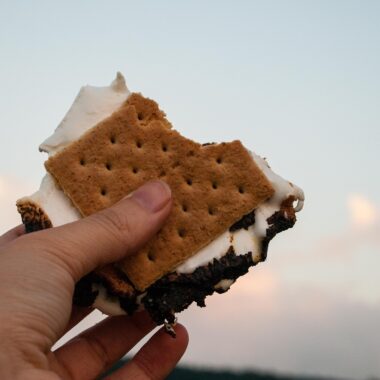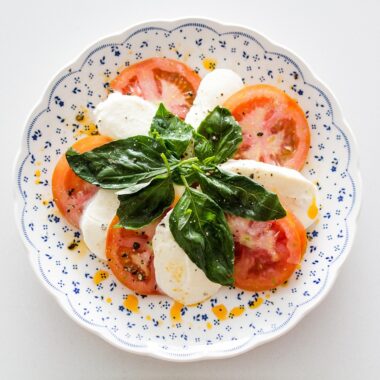Brazilian cheese bread, or Pão de Queijo, is a delightful gluten-free treat that is crispy on the outside and chewy on the inside. Originating from the state of Minas Gerais in Brazil, this savory snack has become popular worldwide for its delicious taste and easy preparation.
Here’s a step-by-step guide to making this beloved Brazilian staple at home.
Ingredients:
2 cups tapioca flour (also known as tapioca starch)
1 cup whole milk
1/2 cup unsalted butter
1 teaspoon salt
1 1/2 cups grated Parmesan cheese
2 large eggs
Instructions:
Preheat the Oven:
Preheat your oven to 375°F (190°C) and line a baking sheet with parchment paper or a silicone baking mat.
Heat the Milk and Butter:
In a medium saucepan, combine the milk, butter, and salt. Heat over medium heat until the butter melts and the mixture comes to a boil.
Add the Tapioca Flour:
Once the milk mixture is boiling, remove it from the heat and immediately add the tapioca flour. Stir vigorously with a wooden spoon until the mixture is well combined and smooth. It will form a thick, sticky dough.
Cool the Dough:
Allow the dough to cool for about 10-15 minutes. This step is crucial to prevent the eggs from cooking when added to the dough.
Incorporate the Eggs and Cheese:
Once the dough has cooled, add the grated Parmesan cheese. Mix well until the cheese is fully incorporated. Then add the eggs, one at a time, mixing thoroughly after each addition. The dough will be sticky and stretchy.
Shape the Dough:
Using your hands or a cookie scoop, shape the dough into small balls, about 1-1.5 inches in diameter. Place them on the prepared baking sheet, spacing them about 1 inch apart.
Bake:
Bake in the preheated oven for 20-25 minutes, or until the cheese breads are puffed up and golden brown. The exterior should be crisp, while the interior remains chewy.
Serve:
Remove the cheese breads from the oven and let them cool slightly before serving. They are best enjoyed warm.
Tips and Variations:
Cheese Variations: While Parmesan is traditional, you can experiment with other cheeses like mozzarella, cheddar, or a mix of different cheeses for varied flavors.
Storage: Store any leftovers in an airtight container. To reheat, simply pop them in the oven for a few minutes until warmed through.
Flavor Additions: For an extra burst of flavor, you can add finely chopped herbs like rosemary or thyme to the dough.
Enjoying Pão de Queijo
Pão de queijo is perfect for breakfast, as a snack, or even as an accompaniment to meals. Pair it with coffee for a traditional Brazilian breakfast experience, or enjoy it with soups and stews.
Its delightful texture and cheesy flavor make it a favorite for any occasion.
With this simple recipe, you can bring a taste of Brazil into your kitchen and enjoy the irresistible flavor of homemade Brazilian cheese bread.
The History and Culture of Pão de Queijo
Pão de queijo has a rich history and cultural significance in Brazil. It dates back to the 18th century in the state of Minas Gerais, a region known for its dairy farming and mining activities. The bread was initially made by African slaves, who used tapioca flour as a substitute for wheat flour, which was scarce at the time. The recipe evolved over time, with the addition of cheese and other ingredients, resulting in the delicious treat we know today.
In Brazilian culture, pão de queijo is more than just a snack; it’s a symbol of hospitality and warmth. Families often gather around the kitchen to make and enjoy these cheese breads together, sharing stories and creating memories. It’s a staple at breakfast tables, afternoon tea, and celebrations, embodying the essence of Brazilian comfort food.
Nutritional Benefits of Pão de Queijo
Besides being delicious, pão de queijo offers several nutritional benefits:
Gluten-Free: Made with tapioca flour, pão de queijo is naturally gluten-free, making it an excellent option for those with gluten sensitivities or celiac disease.
High in Calcium: The cheese used in the recipe provides a good source of calcium, essential for bone health.
Protein-Rich: Eggs and cheese contribute to the protein content, helping to keep you fuller for longer.
Pairing Pão de Queijo with Other Dishes
Pão de queijo is incredibly versatile and can be paired with various dishes to enhance your meal experience:
Breakfast: Serve with scrambled eggs, fresh fruit, and a cup of Brazilian coffee for a hearty start to your day.
Lunch: Pair with a fresh salad, soup, or a light sandwich for a satisfying meal.
Dinner: Serve as a side dish with grilled meats, roasted vegetables, or a hearty stew.
Exploring Variations of Pão de Queijo
While the traditional recipe is beloved, there are several variations you can explore to suit different tastes and dietary needs:
Vegan Pão de Queijo: Substitute the cheese with nutritional yeast and use plant-based milk and a vegan butter alternative.
Spicy Pão de Queijo: Add finely chopped jalapeños or a pinch of cayenne pepper to the dough for a spicy kick.
Sweet Pão de Queijo: Incorporate a bit of sugar and vanilla extract into the dough for a sweet version that pairs well with coffee or tea.
Bringing Brazilian Traditions to Your Kitchen
Making pão de queijo at home is not just about following a recipe; it’s about embracing a part of Brazilian culture. As you knead the dough and shape the balls, think about the generations of families who have done the same, and the joy and connection this simple act brings.
Invite friends and family to join you in the kitchen, share stories, and enjoy the process together. The aroma of baking cheese bread will fill your home with warmth and anticipation, creating an inviting atmosphere that everyone will love.
Pão de queijo is a delightful Brazilian cheese bread that has captured the hearts of many around the world. Its crispy exterior, chewy interior, and cheesy flavor make it a versatile and beloved snack. Whether you stick to the traditional recipe or experiment with variations, making pão de queijo is a rewarding experience that brings a taste of Brazil to your kitchen.
So, gather your ingredients, preheat your oven, and get ready to enjoy this delicious treat. With each bite, you’ll savor the rich history and culture of Brazil, and perhaps create new memories with your loved ones.


















